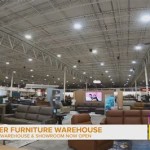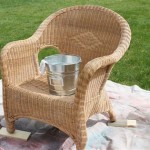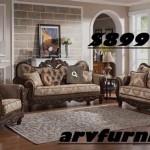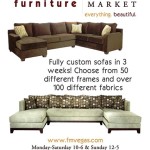The Enduring Appeal of High-End Mid-Century Modern Furniture
Mid-Century Modern (MCM) furniture, a design movement that flourished roughly from the mid-1940s to the mid-1960s, continues to captivate homeowners and designers alike.Characterized by clean lines, organic shapes, a focus on functionality, and a willingness to experiment with new materials, MCM furniture offers a timeless aesthetic that seamlessly integrates into a variety of interior styles. The enduring appeal of high-end MCM pieces stems from a combination of factors, including superior craftsmanship, distinctive design features, and an intrinsic historical value.
The "high-end" designation in this context signifies furniture crafted with meticulous attention to detail, employing premium materials and showcasing exceptional construction techniques. These pieces are often produced in limited quantities, either as original designs from renowned architects and designers or as meticulously reproduced pieces from reputable manufacturers committed to maintaining the integrity of the original vision. Investing in high-end MCM furniture represents more than just acquiring functional objects; it’s an investment in art, history, and enduring quality.
Materials and Craftsmanship: Hallmarks of High-End MCM Furniture
One of the defining characteristics of high-end MCM furniture is the quality of the materials utilized. Solid hardwoods, such as teak, walnut, and rosewood, are frequently employed for their rich tones, durability, and natural beauty. These woods are carefully selected for their grain patterns and structural integrity, ensuring that the furniture withstands the test of time. Veneers, when used, are typically of a high grade and skillfully applied to substrates, creating a seamless and visually appealing surface.
Beyond the wood, other materials commonly found in high-end MCM furniture include leather, upholstery-grade fabrics (often wool, linen, or innovative synthetics), and metal components. Leather selections are typically full-grain or top-grain, prized for their suppleness, durability, and ability to develop a rich patina over time. Fabrics are chosen for their texture, colorfastness, and resistance to wear. Metal elements, such as legs, frames, and hardware, are often crafted from stainless steel, brass, or chrome, adding a touch of elegance and visual contrast to the overall design.
Craftsmanship plays a critical role in determining the quality and value of MCM furniture. High-end pieces are often handcrafted by skilled artisans who possess expertise in woodworking, upholstery, and metalworking techniques. These artisans meticulously execute intricate joinery, ensuring that the furniture is structurally sound and visually flawless. Attention to detail is paramount, with hand-applied finishes, carefully tailored upholstery, and precise alignment of components all contributing to the overall quality and aesthetic appeal.
The construction methods utilized in high-end MCM furniture are often more complex and time-consuming than those employed in mass-produced pieces. Dovetail joints, mortise-and-tenon joints, and other traditional woodworking techniques are frequently used to create strong and durable connections. These methods require a high level of skill and precision, but they result in furniture that is built to last for generations.
Design Elements that Define High-End MCM Aesthetic
The design language of high-end MCM furniture is characterized by a harmonious blend of form and function. Clean lines, geometric shapes, and organic curves are often incorporated into the designs, creating a visually striking and aesthetically pleasing silhouette. The emphasis is on simplicity and functionality, with every element serving a purpose and contributing to the overall design aesthetic.
One of the key design principles of MCM furniture is the concept of "less is more." Designers often eschewed ornamentation and excessive detailing, instead focusing on the inherent beauty of the materials and the purity of the form. This minimalist approach results in furniture that is both elegant and understated, allowing it to seamlessly integrate into a variety of interior styles.
Another defining characteristic of MCM furniture is the use of color and texture. Bright, bold colors, such as orange, yellow, and turquoise, were often incorporated into the designs, adding a touch of vibrancy and personality to the furniture. Textural elements, such as woven fabrics, natural wood grains, and smooth metal surfaces, were also used to create visual interest and tactile appeal.
The use of negative space is also a significant design element in MCM furniture. Designers often created open spaces within the furniture, allowing light to pass through and creating a sense of airiness and lightness. This technique is particularly evident in chairs and tables, where the legs are often slender and widely spaced, creating a sense of visual lightness and elegance.
Many iconic MCM designs feature a deliberate asymmetry, challenging traditional notions of balance and proportion. This asymmetry can manifest in various ways, such as the placement of drawers, the angle of the backrest, or the shape of the legs. This deliberate departure from symmetry adds a touch of dynamism and visual interest to the furniture.
Investing in High-End MCM Furniture: Value and Considerations
Investing in high-end MCM furniture represents a significant financial commitment, but it can also be a rewarding investment in the long term. Original pieces from renowned designers, such as Charles and Ray Eames, George Nelson, and Arne Jacobsen, can command significant prices at auction and in the secondary market. Even meticulously reproduced pieces from reputable manufacturers can retain their value over time, provided they are well-maintained.
When considering purchasing high-end MCM furniture, several factors should be taken into account. The provenance of the piece is crucial, particularly when considering original designs. Documentation, such as original receipts, manufacturer's marks, and expert appraisals, can help to establish the authenticity and value of the furniture. The condition of the piece is also an important consideration. While some wear and tear is to be expected in vintage furniture, excessive damage or repairs can significantly detract from its value.
The reputation of the seller or manufacturer is also a key factor. Purchasing from reputable dealers or manufacturers who specialize in MCM furniture can provide assurance of authenticity and quality. These dealers typically have extensive knowledge of the market and can provide expert guidance on selecting the right piece for your needs and budget.
Another consideration is the compatibility of the furniture with your existing interior design. MCM furniture can complement a variety of styles, from minimalist and contemporary to eclectic and bohemian. However, it is important to choose pieces that harmonize with the overall aesthetic of your home and personal taste.
Ultimately, the decision to invest in high-end MCM furniture is a personal one. It requires careful consideration of your budget, aesthetic preferences, and long-term investment goals. However, for those who appreciate timeless design, superior craftsmanship, and enduring quality, high-end MCM furniture represents a worthwhile and rewarding investment. These pieces are not merely functional objects; they are works of art that can enhance the beauty and value of your home for generations to come.
Preserving the integrity of such furniture is important. Employing methods of care and cleaning that are appropriate for each material involved is essential. This entails using products specifically designed for wood, leather, or metal finishes, and avoiding harsh chemicals or abrasive cleaners that could damage the surfaces. Regular dusting and gentle cleaning will help maintain the furniture's appearance and longevity.
Furthermore, creating a suitable environment is crucial. Exposure to direct sunlight, excessive humidity, or extreme temperature fluctuations can cause damage to the wood, upholstery, and other materials. Placement of furniture away from direct sunlight and controlling humidity levels can help prevent fading, warping, and other forms of deterioration. With proper care and attention, high-end MCM furniture can continue to be enjoyed and appreciated for many years.

25 Best Midcentury Modern Furniture Pieces To Shop In 2024

Renowned Mid Century Modern Furniture Designer Reveals New Collection

Luxury Homes A Scandinavian Home Filled With Mid Century Modern Furniture The Peak Magazine Singapore

45 Irresistibly Stylish Midcentury Modern Living Room Idea

5 Iconic Mid Century Modern Interior Design Furniture Pieces Laskasas

Mid Century Modern Living Room Margarita Bravo
11 Best Midcentury Modern Furniture Stores

10 Iconic Mid Century Modern Furniture Ideas Decorilla Online Interior Design

10 Midcentury Furniture Designer Icons Who Shaped The Future

45 Irresistibly Stylish Midcentury Modern Living Room Idea




